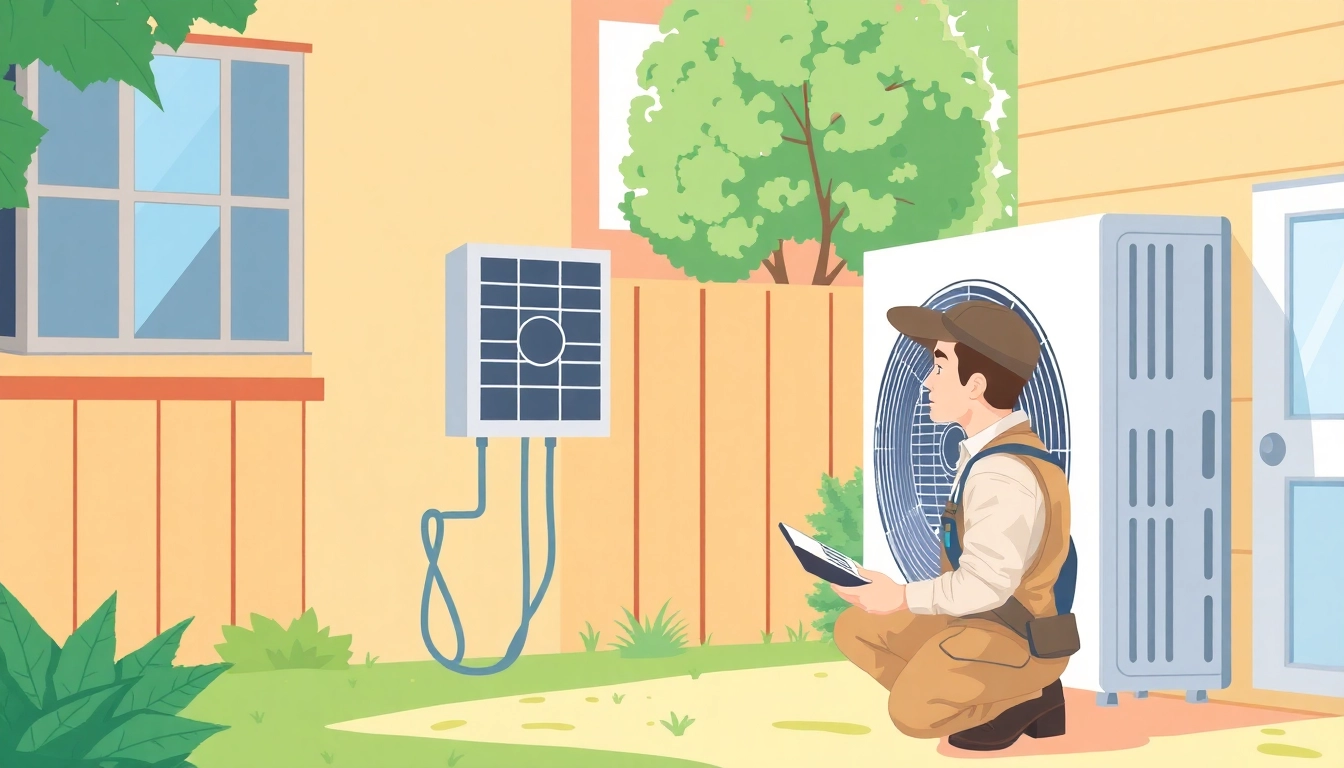Understanding the Significance of Cold Air in Your Home
Why Cold Air Matters
Cold air in your home is not merely about comfort; it significantly impacts health, productivity, and overall well-being. During hot summer months, maintaining a cool indoor environment helps prevent heat-related illnesses and keeps family members comfortable. Studies have shown that excessive heat can lead to decreased productivity and increased irritability, making an efficient cooling system essential for a harmonious living environment. Moreover, proper air conditioning can help manage humidity levels, reducing the risk of mold growth and maintaining indoor air quality.
The Science Behind Air Conditioning
Air conditioning works through a cycle of refrigerant that absorbs heat from the indoor air and releases it outside. This process involves several components, including the compressor, condenser, evaporator, and expansion valve. The refrigerant circulates through these components, absorbing heat from inside your home and releasing it outside. Understanding this cycle is crucial—if any component fails or if there is insufficient refrigerant, the system may struggle to cool the air effectively, leading to the common issue of a central air conditioner is not blowing cold.
Common Misconceptions About AC Performance
There are various misconceptions surrounding the performance of air conditioning systems. One prevalent myth is that a larger unit will always cool better. In contrast, an oversized AC can lead to short-cycling, inefficient cooling, and increased energy usage. Additionally, some homeowners believe that simply lowering the thermostat will improve cooling—however, this can cause excessive wear on the system and does not address underlying issues that may be preventing adequate cooling.
Identifying Causes When Your Central Air Conditioner is Not Blowing Cold
Low Refrigerant Levels
A common cause of an AC not blowing cold air is low refrigerant levels. Refrigerant is the lifeblood of your air conditioning system; it absorbs and releases heat through its phase changes. Low refrigerant often results from a leak—no amount of adjusting the thermostat will correct the lack of cold air. Detecting low refrigerant can be tricky, as it may not always be visible. Signs include a hissing sound or ice buildup on the refrigerant lines. Regular maintenance checks can help prevent refrigerant issues by addressing leaks before they escalate.
Dirty Air Filters and Their Impact
Air filters play a crucial role in the performance of your HVAC system. A dirty or clogged air filter restricts airflow, forcing the system to work harder and leading to inadequate cooling. It’s advisable to change or clean your air filters at least every three months during the cooling season. Regular maintenance of air filters not only improves efficiency but also extends the lifespan of the HVAC system.
Faulty Thermostats: Recognizing the Signs
The thermostat serves as the brain of your air conditioning unit, communicating the desired temperature settings to the system. A malfunctioning thermostat can disrupt this communication, potentially leading to your unit running without actually cooling the space. Symptoms of a faulty thermostat include erratic temperatures, the unit not responding to settings, or inconsistent cooling throughout the house. Testing and recalibrating your thermostat can sometimes resolve issues, but persistent problems might require replacement.
Step-by-Step Troubleshooting for Central AC Issues
Initial Checks to Perform
If you notice your central AC is not blowing cold air, start by performing some initial checks. These include verifying that the thermostat is set to ‘cool,’ ensuring that the unit is receiving power, and inspecting the circuit breaker to see if it has tripped. Additionally, check for any obstructions around the outdoor unit that could disrupt airflow. Taking these steps can help identify simple fixes before proceeding to more complex troubleshooting.
How to Inspect Refrigerant Levels
Inspecting refrigerant levels typically requires expertise because it’s crucial to handle refrigerants responsibly due to environmental regulations. However, you can look for signs indicating low refrigerant levels, such as inadequate cooling or frost on the evaporator coils. If you suspect a leak, it’s best to contact a professional, as they have the tools and training needed to safely handle and replenish refrigerant levels.
Resolving Thermostat Issues
To troubleshoot thermostat issues, begin by checking the batteries if it’s a battery-operated model. If the thermostat is hardwired, ensure it is receiving power. If issues persist, consider recalibrating or resetting the thermostat. Many modern thermostats have diagnostic features that can provide error codes indicating the problem. Should these steps not resolve the issue, replacement may be necessary.
When to Call a Professional
Indicators of Major Problems
While many air conditioning problems can be solved through basic troubleshooting, certain signs should prompt a call to a professional HVAC technician. If you notice unusual noises from your unit, persistent refrigerant leaks, or if your system is running continuously without adequately cooling, it’s time to seek professional help. Additionally, if you see ice forming on the coils or if the system emits strange odors, these issues can signify significant underlying problems.
Potential Costs of Professional Services
Costs for professional HVAC services can vary significantly based on the complexity of the issue, the technician’s experience, and your geographic location. Simple maintenance calls might cost around $75 to $150, while more complex repairs can range from $200 to $400 or more, especially if refrigerant is involved. It’s essential to obtain estimates from multiple service providers and verify their credentials for peace of mind.
Finding the Right HVAC Technician
When seeking an HVAC technician, consider asking for referrals from friends and family or looking for online reviews. Verify that the technician is licensed and insured, as this ensures they comply with local regulations and have liability coverage. Additionally, inquire about their experience with your specific AC model and their warranty policies on repairs. A reliable technician not only resolves current issues but also provides ongoing support for your HVAC system.
Preventative Maintenance for Optimal AC Performance
Regular Maintenance Tips
Preventative maintenance is key to ensuring your air conditioning system operates at peak efficiency. Schedule yearly professional inspections to check the refrigerant levels, clean coils, and ensure all electrical components are functioning correctly. Homeowners can also perform routine checks, such as cleaning or replacing air filters regularly, and ensuring that the outdoor unit is free of debris and vegetation.
Seasonal Preparations for Your AC
Preparing your AC system for different seasons can improve its reliability and performance. Before the hot months, check your system thoroughly, including refrigerant levels, filters, and any visible damage. During fall, consider having a technician inspect and service the unit to prepare it for dust accumulation during the winter months. Proper seasonal preparations enhance performance and prolong the life of your system.
Investing in Upgrades for Efficiency
As technology evolves, so do HVAC systems. If your unit is over ten years old and frequently requiring repairs, it may be time to consider upgrading to a more energy-efficient model. Modern air conditioners use less energy and often come equipped with advanced features, such as programmable thermostats, variable-speed fans, and enhanced filtering systems, which not only reduce energy bills but also improve indoor air quality.



